Economy
Federal government’s GHG reduction plan will impose massive costs on Canadians

From the Fraser Institute
Many Canadians are unhappy about the carbon tax. Proponents argue it’s the cheapest way to reduce greenhouse gas (GHG) emissions, which is true, but the problem for the government is that even as the tax hits the upper limit of what people are willing to pay, emissions haven’t fallen nearly enough to meet the federal target of at least 40 per cent below 2005 levels by 2030. Indeed, since the temporary 2020 COVID-era drop, national GHG emissions have been rising, in part due to rapid population growth.
The carbon tax, however, is only part of the federal GHG plan. In a new study published by the Fraser Institute, I present a detailed discussion of the Trudeau government’s proposed Emission Reduction Plan (ERP), including its economic impacts and the likely GHG reduction effects. The bottom line is that the package as a whole is so harmful to the economy it’s unlikely to be implemented, and it still wouldn’t reach the GHG goal even if it were.
Simply put, the government has failed to provide a detailed economic assessment of its ERP, offering instead only a superficial and flawed rationale that overstates the benefits and waives away the costs. My study presents a comprehensive analysis of the proposed policy package and uses a peer-reviewed macroeconomic model to estimate its economic and environmental effects.
The Emissions Reduction Plan can be broken down into three components: the carbon tax, the Clean Fuels Regulation (CFR) and the regulatory measures. The latter category includes a long list including the electric vehicle mandate, carbon capture system tax credits, restrictions on fertilizer use in agriculture, methane reduction targets and an overall emissions cap in the oil and gas industry, new emission limits for the electricity sector, new building and motor vehicle energy efficiency mandates and many other such instruments. The regulatory measures tend to have high upfront costs and limited short-term effects so they carry relatively high marginal costs of emission reductions.
The cheapest part of the package is the carbon tax. I estimate it will get 2030 emissions down by about 18 per cent compared to where they otherwise would be, returning them approximately to 2020 levels. The CFR brings them down a further 6 per cent relative to their base case levels and the regulatory measures bring them down another 2.5 per cent, for a cumulative reduction of 26.5 per cent below the base case 2030 level, which is just under 60 per cent of the way to the government’s target.
However, the costs of the various components are not the same.
The carbon tax reduces emissions at an initial average cost of about $290 per tonne, falling to just under $230 per tonne by 2030. This is on par with the federal government’s estimate of the social costs of GHG emissions, which rise from about $250 to $290 per tonne over the present decade. While I argue that these social cost estimates are exaggerated, even if we take them at face value, they imply that while the carbon tax policy passes a cost-benefit test the rest of the ERP does not because the per-tonne abatement costs are much higher. The CFR roughly doubles the cost per tonne of GHG reductions; adding in the regulatory measures approximately triples them.
The economic impacts are easiest to understand by translating these costs into per-worker terms. I estimate that the annual cost per worker of the carbon-pricing system net of rebates, accounting for indirect effects such as higher consumer costs and lower real wages, works out to $1,302 as of 2030. Adding in the government’s Clean Fuels Regulations more than doubles that to $3,550 and adding in the other regulatory measures increases it further to $6,700.
The policy package also reduces total employment. The carbon tax results in an estimated 57,000 fewer jobs as of 2030, the Clean Fuels Regulation increases job losses to 94,000 and the regulatory measures increases losses to 164,000 jobs. Claims by the federal government that the ERP presents new opportunities for jobs and employment in Canada are unsupported by proper analysis.
The regional impacts vary. While the energy-producing provinces (especially Alberta, Saskatchewan and New Brunswick) fare poorly, Ontario ends up bearing the largest relative costs. Ontario is a large energy user, and the CFR and other regulatory measures have strongly negative impacts on Ontario’s manufacturing base and consumer wellbeing.
Canada’s stagnant income and output levels are matters of serious policy concern. The Trudeau government has signalled it wants to fix this, but its climate plan will make the situation worse. Unfortunately, rather than seeking a proper mandate for the ERP by giving the public an honest account of the costs, the government has instead offered vague and unsupported claims that the decarbonization agenda will benefit the economy. This is untrue. And as the real costs become more and more apparent, I think it unlikely Canadians will tolerate the plan’s continued implementation.
Author:
Business
Canadians love Nordic-style social programs as long as someone else pays for them

This article supplied by Troy Media.
 By Pat Murphy
By Pat Murphy
Generous social programs come with trade-offs. Pretending otherwise is political fiction
Nordic societies fund their own benefits through taxes and cost-sharing. Canadians expect someone to foot the bill
Like Donald Trump, one of my favourite words starts with the letter “T.” But where Trump likes the word “tariff,” my choice is “trade-off.” Virtually everything in life is a trade-off, and we’d all be much better off if we instinctively understood that.
Think about it.
If you yield to the immediate pleasure of spending all your money on whatever catches your fancy, you’ll wind up broke. If you regularly enjoy drinking to excess, be prepared to pay the unpleasant price of hangovers and maybe worse. If you don’t bother to acquire some marketable skill or credential, don’t be surprised if your employment prospects are limited. If you succumb to the allure of fooling around, you may well lose your marriage. And so on.
Failing to understand trade-offs also extends into political life. Take, for instance, the current fashion for anti-capitalist democratic socialism. Pushed to explain their vision, proponents will often make reference to the Nordic countries. But they exhibit little or no understanding of how these societies actually work.
As American economist Deirdre Nansen McCloskey notes, “Sweden is pretty much as ‘capitalistic’ as is the United States. If ‘socialism’ means government ownership of the means of production, which is the classic definition, Sweden never qualified.” The central planning/government ownership model isn’t the Swedish way.
What the Nordics do have, however, is a robust social safety net. And it’s useful to look at how they pay for it.
J.P. Morgan’s Michael Cembalest is a man who knows his way around data. He puts it this way: “Copy the Nordic model if you like, but understand that it entails a lot of capitalism and pro-business policies, a lot of taxation on middle-class spending and wages, minimal reliance on corporate taxation and plenty of co-pays and deductibles in its health care system.”
For instance, take the kind of taxes that are often derided as undesirably regressive—sales taxes, social security taxes and payroll taxes. In Sweden, they account for a whopping 27 per cent of gross domestic product. And some 15 per cent of health expenditures are out of pocket.
Charles Lane—formerly with the Washington Post, now with The Free Press—is another who pulls no punches: “Nordic countries are generous, but they are not stupid. They understand there is no such thing as ‘free’ health care, and that requiring patients to have at least some skin in the game, in the form of cost-sharing, helps contain costs.”
In effect, Nordic societies have made an internal bargain. Ordinary people are prepared to fork over large chunks of their own money in return for a comprehensive social safety net. They’re not expecting the good stuff to come to them without a personal cost.
Scandinavians obviously understand the concept of trade-offs, a dimension that seems to be absent from much of the North American discussion. Instead of Nordic-style pragmatism, spending ideas on this side of the Atlantic are floated on the premise of having someone else pay. And the electorally prized middle class is to be protected at all costs.
In the aftermath of Zohran Mamdami’s New York City win, journalist Kevin Williamson had a sobering reality check: “Class warfare isn’t how they roll in Scandinavia. Oslo is a terrific place to be a billionaire—Copenhagen and Stockholm, too … what’s radically different about the Scandinavians is not how they tax the very high-income but how they tax the middle.”
Taxation propensities aside, Nordic societies are different from the United States and Canada.
Denmark, for instance, is very much a “high-trust” society, defined as a place “where interpersonal trust is relatively high and ethical values are strongly shared.” It’s often been said that it works the way it does because it’s full of Danes, which is broadly true—albeit less so than it was 40 years ago.
Denmark, though, has no interest in multiculturalism as we’ve come to know it. Although governed from the centre-left, there’s no state-sponsored focus on systemic discrimination or diversity representation. Instead, the emphasis is on social cohesion and conformity. If you want to create a society like Denmark, it helps to understand the dynamics that make it work.
Reality intrudes on all sorts of other issues. For example, there’s the way in which public discourse is disfigured on the question of climate change and the need to pursue aggressive net-zero policies.
Asked in the abstract, people are generally favourable, which is then touted as evidence of strong public support. But when subsequently asked how much they’re personally prepared to pay to accomplish these ambitious goals, the answer is often little or nothing.
If there’s one maxim we should be taught from childhood, it’s this: there are no panaceas, only trade-offs.
Troy Media columnist Pat Murphy casts a history buff’s eye at the goings-on in our world. Never cynical – well, perhaps a little bit.
Troy Media empowers Canadian community news outlets by providing independent, insightful analysis and commentary. Our mission is to support local media in helping Canadians stay informed and engaged by delivering reliable content that strengthens community connections and deepens understanding across the country.
Business
Higher carbon taxes in pipeline MOU are a bad deal for taxpayers
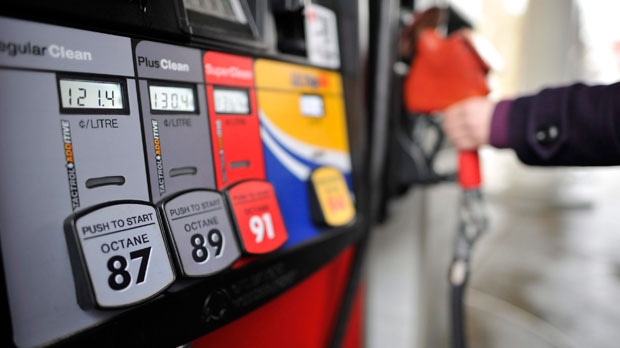
The Canadian Taxpayers Federation is criticizing the Memorandum of Understanding between the federal and Alberta governments for including higher carbon taxes.
“Hidden carbon taxes will make it harder for Canadian businesses to compete and will push Canadian entrepreneurs to shift production south of the border,” said Franco Terrazzano, CTF Federal Director. “Politicians should not be forcing carbon taxes on Canadians with the hope that maybe one day we will get a major project built.
“Politicians should be scrapping all carbon taxes.”
The federal and Alberta governments released a memorandum of understanding. It includes an agreement that the industrial carbon tax “will ramp up to a minimum effective credit price of $130/tonne.”
“It means more than a six times increase in the industrial price on carbon,” Prime Minister Mark Carney said while speaking to the press today.
Carney previously said that by “changing the carbon tax … We are making the large companies pay for everybody.”
A Leger poll shows 70 per cent of Canadians believe businesses pass most or some of the cost of the industrial carbon tax on to consumers. Meanwhile, just nine per cent believe businesses pay most of the cost.
“It doesn’t matter what politicians label their carbon taxes, all carbon taxes make life more expensive and don’t work,” Terrazzano said. “Carbon taxes on refineries make gas more expensive, carbon taxes on utilities make home heating more expensive and carbon taxes on fertilizer plants increase costs for farmers and that makes groceries more expensive.
“The hidden carbon tax on business is the worst of all worlds: Higher prices and fewer Canadian jobs.”
-

 Alberta22 hours ago
Alberta22 hours agoFrom Underdog to Top Broodmare
-

 Energy2 days ago
Energy2 days agoPoilievre says West Coast Pipeline MOU is no guarantee
-
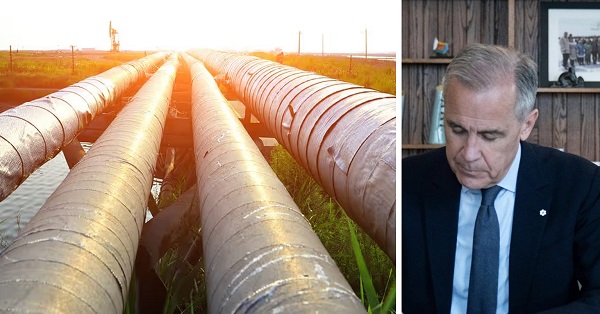
 Energy2 days ago
Energy2 days agoWill the New West Coast Pipeline MoU Lead to Results? Almost Certainly Not According to AI
-
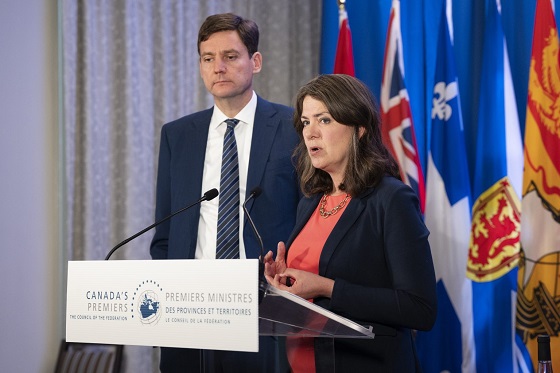
 Alberta2 days ago
Alberta2 days agoWest Coast Pipeline MOU: A good first step, but project dead on arrival without Eby’s assent
-

 Carbon Tax2 days ago
Carbon Tax2 days agoCanadian energy policies undermine a century of North American integration
-
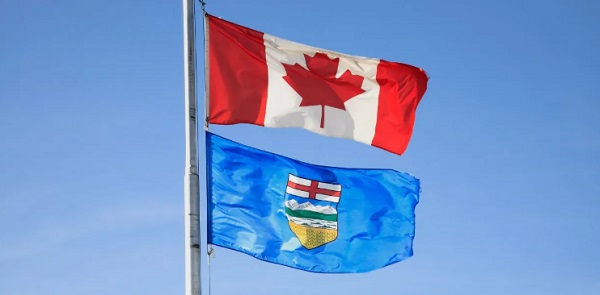
 Alberta2 days ago
Alberta2 days agoCarney forces Alberta to pay a steep price for the West Coast Pipeline MOU
-
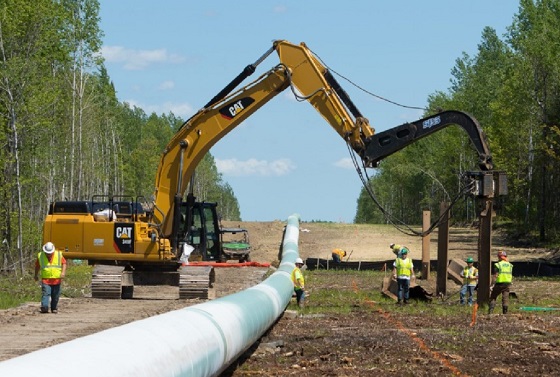
 Energy1 day ago
Energy1 day agoOttawa and Alberta’s “MOU” a step in the right direction—but energy sector still faces high costs and weakened competitiveness
-

 Alberta2 days ago
Alberta2 days agoAlberta and Ottawa ink landmark energy agreement



